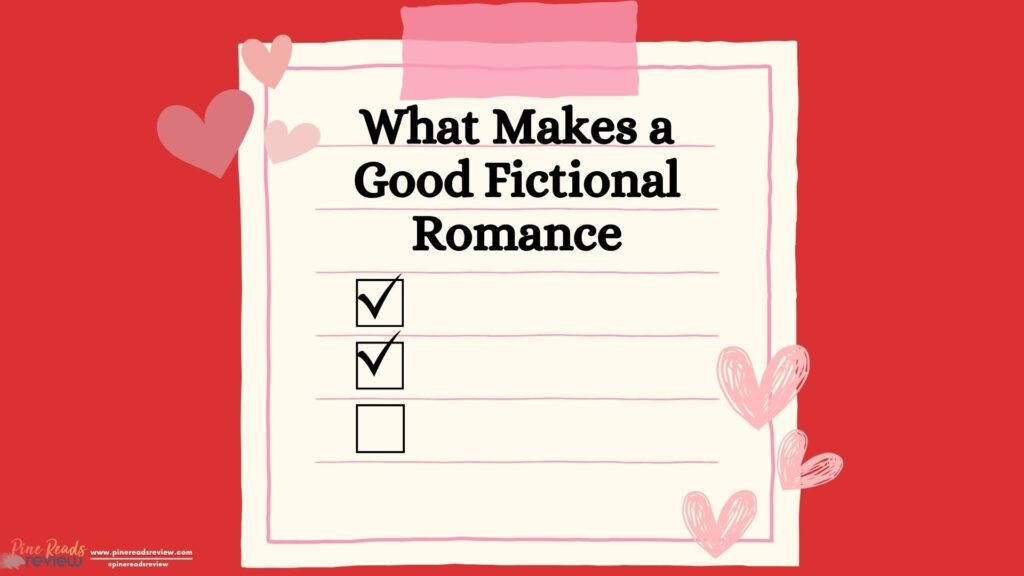
Compelling Characters: No matter the genre you are reading or writing, compelling characters with their own hopes and dreams are necessary. There isn’t anything I find more frustrating in a book than when the main love interest or the main character has no goal other than finding love. Characters that have aspirations allow audiences to connect with them, either by finding them relatable or sympathizing with their struggles. If the main characters of a romance novel have these external goals, the romance can act as a disrupter, causing the characters to rethink what they want or need. This can also establish conflict with the romance early on, forcing the characters to go through personal growth and creating an arc with the central message or theme of the novel.
Commonalities and Contrasts: Similar to characters having their own dreams and plotlines separate from one another, it is imperative that a romance novel establishes not only commonalities between the couple but also fundamental differences. Characters that have similar values are bound to fall in love—think of Elizabeth Bennet and Mr. Darcy. Both characters are independent and quick to judge. Despite their class differences and initial enmity, they both value intuition and intelligence. The contrasts between the two love interests can build tension and invest the readers in an “enemies-to-lovers” style of romance. By establishing these traits that bring the characters together but also divide, readers become more invested in seeing the characters develop and discover what they love and value in one another.
A Bit of Realism: The “perfect couple” is not always the most riveting thing to read about. A couple who never fights or has any problems can be a slog of a read and, at times, become incredibly boring. By including a bit of realism in a fictional romance, readers can ground themselves in the world. Inviting realistic conflicts throughout the novel and establishing hostility in certain areas allows readers to find the characters more relatable as well. Realistic tensions with the couple can also make their love seem more palpable. A bit of bickering and sass can go a long way to make a romance seem more organic!
A Natural Progression: While love at first sight can be endearing, insta-love can take readers out of the story. A good love story has a natural progression, whether this be through a continuing conflict or outside factors preventing their love. It can be gratifying to be forced to wait for the main couple to come together. For instance, the moments when the characters are just about to kiss, only to be interrupted by a family member or a previous lover, can create tension and anticipation for when the characters do eventually get together. Not only that, but a natural progression continues to build this anticipation, which makes the reader want to keep reading. You know a romance is good when you can’t put the book down until the characters come together. In other words, good things are worth waiting for.
Chemistry and Tension: At the center of a good romance is the yearning for one another—the unabashed chemistry palpable on every page. Whether through stolen glances, a brush of a finger, or even clever repartee, creating tension between characters keeps readers engrossed. This is common in popular romance tropes, with enemies-to-lovers quarreling incessantly, or even the slow-burns having countless almost-moments only to be interrupted or torn apart by external factors. These instances offer suspense and excitement that are sure to get the reader’s heart pumping a little faster.
Some Necessary Conflict: Like all good rom-coms, there comes a time in the third act when one of the love interests gives up on the other, and all communication is thrown out the window just to make it even more satisfying when they come back together. While the third-act conflict between a couple is sometimes overdone in the romance genre, this conflict can still be necessary to ensure that the ending in the rain is something ripped right out of a fairytale. To create a necessary conflict, the characters must have their own central goal or something forcing them to separate. A moment of poor communication can be frustrating. Centering the conflict on something already established, whether it be a character flaw or an overbearing family, allows the reader to not feel cheated out of a perfect story and heightens the moment when everything fits into place.
A Happily Ever After or A Happily Never After: Endings are the hardest part of any writer’s journey and can ruin a book for a reader if not done properly. The tone of the romance can set the stage for what is to come. A “happily ever after” for a couple can be satisfying, but leaving the reader to think about what comes after the happy ending can be even more satisfying. Knowing that there are still struggles and conflicts to work through despite the love that has blossomed offers some realism to a book and offers room for a sequel to expand on these issues. On the other hand, a “happily never after” moment allows readers to sink into the loss of a character or a love that was so nearly-perfect. The ending should support the story being told and feel organic in the context of the novel.
As Valentine’s Day approaches, you may find yourself wanting to read more romance novels, and you want a novel with all the right tropes and moments to make your heart flutter. What makes a good romance novel to one person might vary from person to person. No matter what, it is important to establish compelling characters, commonalities and oppositions between the characters, chemistry, and tension. Also including a bit of realism, a natural progression, a necessary conflict, and an ending that suits the story being told will ensure that your romance is one that sticks with readers.
Jenica Delaney, Pine Reads Review Writer